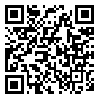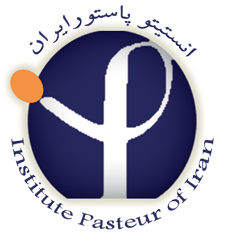Volume 28, Issue 5 And 6 (9-2024)
IBJ 2024, 28(5 And 6): 255-264 |
Back to browse issues page
Ethics code: IR.UM.REC.1402.057
Download citation:
BibTeX | RIS | EndNote | Medlars | ProCite | Reference Manager | RefWorks
Send citation to:



BibTeX | RIS | EndNote | Medlars | ProCite | Reference Manager | RefWorks
Send citation to:
Bazmani A, Moshaverinia* A, Razmi G. Simultaneous Application of Thymoquinone and Hydroxychloroquine Suppresses Autophagy and Disrupts the Autophagosomal Trench Engulfed Leishmania major. IBJ 2024; 28 (5 and 6) :255-264
URL: http://ibj.pasteur.ac.ir/article-1-4481-en.html
URL: http://ibj.pasteur.ac.ir/article-1-4481-en.html
Abstract:
Background: Leishmaniasis is a vector-borne disease prevalent in 98 countries worldwide. The current treatment has shortcomings, including drug resistance and adverse effects, highlighting the need for novel medications and treatment strategies. This study aimed to investigate the anti-leishmanial effect of thymoquinone (TQ) during the regulation of autophagy in the macrophage cell line (RAW 264.7).
Methods: After culturing the macrophage cell line, an MTT assay was performed to assess the cytotoxicity effects of the agents at different concentrations of TQ, HCQ (hydroxychloroquine), MET (metformin), and GLU (glucantime). The study groups included PBS, GLU, TQ, TQ + MET, GLU + MET, TQ + HCQ, GLU + HCQ, HCQ, and MET. The cells were then infected with L. major and treated with TQ, while autophagy was regulated using HCQ and MET. Subsequently, the infection index, the number of amastigote loads, and the fold change in the expression of specific autophagy-related genes (LC3, P62, and Beclin) in the treatment groups were evaluated.
Results: There was a significant decrease in the percentage of the infected macrophages treated with TQ and also the autophagy inhibitor HCQ compared to the control group. Macrophages treated with HCQ + TQ showed a significant reduction in the infection index and amastigote load compared to the TQ-treated group. Additionally, using HCQ as an autophagy inhibitor, along with TQ or GLU, enhanced the clearance of parasites and reduced the infection index of macrophages.
Conclusion: Downregulating autophagy could be a promising approach for Leishmania therapy, by which the leishmanicidal effect of TQ and GLU will be enhanced.
Methods: After culturing the macrophage cell line, an MTT assay was performed to assess the cytotoxicity effects of the agents at different concentrations of TQ, HCQ (hydroxychloroquine), MET (metformin), and GLU (glucantime). The study groups included PBS, GLU, TQ, TQ + MET, GLU + MET, TQ + HCQ, GLU + HCQ, HCQ, and MET. The cells were then infected with L. major and treated with TQ, while autophagy was regulated using HCQ and MET. Subsequently, the infection index, the number of amastigote loads, and the fold change in the expression of specific autophagy-related genes (LC3, P62, and Beclin) in the treatment groups were evaluated.
Results: There was a significant decrease in the percentage of the infected macrophages treated with TQ and also the autophagy inhibitor HCQ compared to the control group. Macrophages treated with HCQ + TQ showed a significant reduction in the infection index and amastigote load compared to the TQ-treated group. Additionally, using HCQ as an autophagy inhibitor, along with TQ or GLU, enhanced the clearance of parasites and reduced the infection index of macrophages.
Conclusion: Downregulating autophagy could be a promising approach for Leishmania therapy, by which the leishmanicidal effect of TQ and GLU will be enhanced.
Type of Study: Full Length/Original Article |
Subject:
Related Fields
References
1. Alvar J, Velez D I, Bern C, Herrero M, Desjeux P, Cano J, et al. Leishmaniasis worldwide and global estimates of its incidence. PloS One. 2012;7(5):e35671. [DOI:10.1371/journal.pone.0035671]
2. Guhe V, Ingale P, Tambekar A, Singh S. Systems biology of autophagy in leishmanial infection and its diverse role in precision medicine. Front Mol Biosci. 2023;21:10:1113249. [DOI:10.3389/fmolb.2023.1113249]
3. Pulvertaft R J, Hoyle G F. Stages in the life-cycle of Leishmania donovani. Trans R Soc Trop Med Hyg. 1960;54(2):191-6. [DOI:10.1016/0035-9203(60)90057-2]
4. Colmenares M, Kar S, Goldsmith-Pestana K, McMahon-Pratt D. Mechanisms of pathogenesis: differences amongst Leishmania species. Trans R Soc Trop Med Hyg. 2002;96:3-7. [DOI:10.1016/S0035-9203(02)90044-1]
5. Steverding D. The history of leishmaniasis. Parasit vectors. 2017;10(1):82. [DOI:10.1186/s13071-017-2028-5]
6. Frézard F, Demicheli C, Ribeiro RR. Pentavalent antimonials: new perspectives for old drugs. Molecules. 2009; 14(7):2317-36. [DOI:10.3390/molecules14072317]
7. Sundar S, Jha T k, Thakur C, Sinha P, Bhattacharya S. Injectable paromomycin for visceral leishmaniasis in India. N Engl J Med. 2007;356(25):2571-81. [DOI:10.1056/NEJMoa066536]
8. Pradhan S, Schwartz R, Patil A, Grabbe S, Goldust M. Treatment options for leishmaniasis. Clin Exp Dermatol. 2022; 47(3):516-21. [DOI:10.1111/ced.14919]
9. Sundar S, Olliaro P. Miltefosine in the treatment of leishmaniasis: clinical evidence for informed clinical risk management. Ther Clin Risk Manag. 2007;3(5):733-40.
10. Croft S, Sundar S, Fairlamb A. Drug resistance in leishmaniasis. Clin Microbiol Rev. 2006;19(1):111-26. [DOI:10.1128/CMR.19.1.111-126.2006]
11. Ganguly S, Kanti Das N, Barbhuiya J, Chatterjee M. Post-kala-azar dermal leishmaniasis-an overview. Int J Dermatol. 2010;49(8):921-31. [DOI:10.1111/j.1365-4632.2010.04558.x]
12. Coutinho JV, Dos Santos FS, Ribeiro RD, Oliveira IB, Dantas VB, Santos AB, et al. Visceral leishmaniasis and leishmaniasis-HIV coinfection: comparative study. Rev Soc Bras Med Trop. 2017;50(5):670-4. [DOI:10.1590/0037-8682-0193-2017]
13. Jha TK. Epidemiology of drug-resistant kala-azar in India and neighboring countries. Kala Azar in South Asia. 2016;25:33-51. [DOI:10.1007/978-3-319-47101-3_4]
14. Islamuddin M, Ali A, Afzal O, Ali A, Ali I, Altamimi ASA, et al. Thymoquinone induced leishmanicidal effect via programmed cell death in Leishmania donovani. ACS Omega. 2022;7(12):10718-28. [DOI:10.1021/acsomega.2c00467]
15. Cyrino LT, Araujo AP, Joazeiro PP, Vicente CP, Giorgio S. In vivo and in vitro Leishmania amazonensis infection induces autophagy in macrophages. Tissue Cell. 2012;44(6):401-8. [DOI:10.1016/j.tice.2012.08.003]
16. Pinheiro RO , Nunes M, Pinheiro C, D'Avila H, T Bozza P, M Takiya C, et al. Induction of autophagy correlates with increased parasite load of Leishmania amazonensis in BALB/c but not C57BL/6 macrophages. Microbes Infect. 2009; 11(2):181-90. [DOI:10.1016/j.micinf.2008.11.006]
17. Dias BR , De Souza CS, Almeida N, B Lima J, Fukutani KF, Dos Santos TB, et al. Autophagic induction greatly enhances Leishmania major intracellular survival compared to Leishmania amazonensis in CBA/j-infected macrophages. Front Microbiol. 2018;9:1890. [DOI:10.3389/fmicb.2018.01890]
18. Thomas SA, Nandan D, Kass J, Reiner NE. Countervailing, time-dependent effects on host autophagy promote intracellular survival of Leishmania. J Biol Chem. 2017; 293(7): 2617-30. [DOI:10.1074/jbc.M117.808675]
19. Späth GF, Beverley SM. A lipophosphoglycan-independent method for isolation of infective Leishmania metacyclic promastigotes by density gradient centrifugation. Exp parasitol. 2001;99(2):97-103. [DOI:10.1006/expr.2001.4656]
20. Linares E, Giorgio S, Augusto O. Inhibition of in vivo leishmanicidal mechanisms by tempol: nitric oxide down-regulation and oxidant scavenging. Free Radic Biol Med. 2008;44(8):1668-76. [DOI:10.1016/j.freeradbiomed.2008.01.027]
21. Rokni N, Faridnia R, Rahimi B, Eslami S, Fakhar M, Youssefi MR, et al. Peganum harmala and Nigella sativa: anti-leishmanial activity against Leishmania major promastigotes and amastigotes: in vitro and ex vivo experiment. Ann Parasitol. 2021;67(2):313-19.
22. Chen J, Pan Q, Bai Y, Chen X, Zhou Y. Hydroxychloroquine induces apoptosis in cholangiocarcinoma via reactive oxygen species accumulation induced by autophagy inhibition. Front Mol Biosci. 2021;8:720370. [DOI:10.3389/fmolb.2021.720370]
23. Ramser B, Kokot A, Metze D, Weiss N, Luger TA, Bohm M. Hydroxychloroquine modulates metabolic activity and proliferation and induces autophagic cell death of human dermal fibroblasts. J Invest Dermatol. 2009;129(10):2419-26. [DOI:10.1038/jid.2009.80]
24. Erices R, Bravo M, Gonzalez P, Oliva B, Racordon D, Garrido M, et al. Metformin, at concentrations corresponding to the treatment of diabetes, potentiates the cytotoxic effects of carboplatin in cultures of ovarian cancer cells. Reprod Sci. 2013;20(12):1433-46. [DOI:10.1177/1933719113488441]
25. Sadeghsoltani F, Avci CB, Hassanpour P, Haiaty S, Rahmati M, Mota A, et al. Autophagy modulation effect on homotypic transfer of intracellular components via tunneling nanotubes in mesenchymal stem cells. Stem Cell Res Ther. 2024;15(1):189. [DOI:10.1186/s13287-024-03813-1]
26. Karimi M, Naserifar R, Abbasi N, Abdi J, Maspi N. In vitro antileishmanial activity of hydroalcoholic Thymbra spicata extract on Leishmania major promastigotes. Ann Parasitol. 2021;67(2):237-241.
27. Nakagawa I, Amano A, Mizushima N, Yamamoto A, Yamaguchi H, Kamimoto T, et al. Autophagy defends cells against invading group A Streptococcus. Science. 2004;306(5698):1037-40. [DOI:10.1126/science.1103966]
28. Birmingham CL, Brumell JH. Autophagy recognizes intracellular Salmonella enterica serovar Typhimurium in damaged vacuoles. Autophagy. 2006;2(3):156-8. [DOI:10.4161/auto.2825]
29. Mitchell G, Cheng M, Chen C, Nguyen BN, Whiteley AT, Kianian S, et al. Listeria monocytogenes triggers noncanonical autophagy upon phagocytosis, but avoids subsequent growth-restricting xenophagy. Proc Natl Acad Sci USA. 2018;115(2):210-17. [DOI:10.1073/pnas.1716055115]
30. Yoshikawa Y, Ogawa M, Hain T, Chakraborty T, Sasakawa C. Listeria monocytogenes ActA is a key player in evading autophagic recognition. Autophagy. 2009;5(8):1220-1. [DOI:10.4161/auto.5.8.10177]
31. Krokowski S, Mostowy S. Interactions between Shigella flexneri and the autophagy machinery. Front Cell Infect Microbiol.2016;6:17. [DOI:10.3389/fcimb.2016.00017]
32. Gong L, Devenish RJ, Prescott M. Autophagy as a macrophage response to bacterial infection. IUBMB Life. 2012; 64(9):740-7. [DOI:10.1002/iub.1070]
33. Van Zandbergen G, Klinger M, Mueller A, Dannenberg S, Gebert A, Solbach W, et al. Cutting edge: neutrophil granulocyte serves as a vector for Leishmania entry into macrophages. J Immunol. 2004;173(11):6521-5. [DOI:10.4049/jimmunol.173.11.6521]
34. Schaible UE, Schlesinger PH, Steinberg TH, Mangel WF, Kobayashi T, Russell DG. Parasitophorous vacuoles of Leishmania mexicana acquire macromolecules from the host cell cytosol via two independent routes. J Cell Sci. 1999;112(5):681-93. [DOI:10.1242/jcs.112.5.681]
35. Franco LH, Fleuri Ak, Pellison NC, Quirino GF, Horta C, Carvalho RVH, et al. Autophagy downstream of endosomal Toll-like receptor signaling in macrophages is a key mechanism for resistance to Leishmania major infection. J Biol Chem. 2017;292(32):13087-96. [DOI:10.1074/jbc.M117.780981]
36. Abamor ES, Tosyali OA, Bagirova M, Allahverdiyev A. Nigella sativa oil entrapped polycaprolactone nanoparticles for leishmaniasis treatment. IET Nanobiotechnol. 2018;12(8):1018-26. [DOI:10.1049/iet-nbt.2018.5115]
37. Racoma IO, Meisen WH, Wang QE, Kaur B, Wani A. Thymoquinone inhibits autophagy and induces cathepsin-mediated, caspase-independent cell death in glioblastoma cells. Plos One. 2013;8(9):e72882. [DOI:10.1371/journal.pone.0072882]
38. Zhang Y, Fan Y, Huang S, Wang G, Han R, Lei F, et al. Thymoquinone inhibits the metastasis of renal cell cancer cells by inducing autophagy via AMPK/mTOR signaling pathway. Cancer Sci. 2018;109(12):3865-73. [DOI:10.1111/cas.13808]
39. Liu D, Zhao L. Thymoquinone-induced autophagy mitigates doxorubicin-induced H9c2 cell apoptosis. Exp Ther Med. 2022;24(5):694. [DOI:10.3892/etm.2022.11630]
40. İlhan S, Oguz F. Induction of autophagic cell death by thymoquinone in docetaxel resistant prostate cancer cells. Duzce Med J. 2021;23(2):187-91. [DOI:10.18678/dtfd.925238]
| Rights and permissions | |
 |
This work is licensed under a Creative Commons Attribution-NonCommercial 4.0 International License. |









.png)
